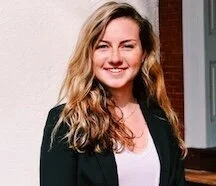In light of the U.S.’s Black Lives Matter movement, women in Nigeria have begun their own protests online following the abuse and death of three women.
Since April 2020, Nigeria has seen an extreme increase of sexual violence and police brutality. However, attention was gained on the issue after the death of three women. In April, an 18-year-old woman known as “Jennifer” was gang raped by up to five men. Toward the end of May, 22-year-old Vera Uwaila “Uwa” Omozuma was also sexually assaulted and killed. Around the same time, 17-year-old Tina Ezekwe died after police opened fire on her as she sat at a bus station during a curfew established due to COVID-19.
Unfortunately, the main reason why arrests in Uwa and Jennifer’s cases were made in the first place was due to public outcry, especially from family members of the victims. There was a great fear that those at fault may never be held accountable and that families would never get justice for the wrongful deaths of their loved ones. #JusticeForUwa, #JusticeForTina and #JusticeForJennifer have been used in campaigns across Nigeria, all inspired by Black Lives Matter protests over the past week in the U.S. For Jennifer’s family, it also took the release of a video of her family trying to comfort her to trigger national response.
Arrests, not all, have been made for the death and sexual assaults of Uwa and Jennifer. On the other hand, police who were found guilty for killing Tina have been dismissed by the police department of Lagos but still must face internal disciplinary actions upon further investigation. The regional governor of southern Edo, home of Uwa, also pledged to investigate her case to bring all those to justice.
Photo of Vera Uwaila “Uwa” Omozuma. CNN. CC 2.0
However, many across the country are also fearful of the increase of rapes due to many individuals across the region being displaced. Nigeria has a long history of violence between tribes which makes women feel more vulnerable. Those who are supposed to be watching over the refugee camps have been held responsible for raping girls as young as 9. Being displaced has also caused a phenomenon where families are selling their young daughters for marriage in exchange for money.
In 2014, a survey found that one in four Nigerian women experienced sexual violence. 70% of women even experienced multiple incidents of abuse yet only 5% reported the crimes. Many have linked President Muhammadu Buhari to U.S. President Donald Trump due to the lack of national support and resources readily available to survivors. Most women cannot even receive treatment without filing a police report first. Just as with the assaults in refugee camps, it has caused hesitation in women for filing reports
The internet has become the main outlet for these protests unlike what has been seen in the U.S. Protesting on the street is highly discouraged as protesters could be punished for their actions. Thus, having access to the internet has been able to highlight the injustices of the police in Nigeria. Currently, the #WeAreTired campaign is aimed at not only raising awareness of violence against women in Nigeria, but the overall dissatisifcation with the government in its lack of action.
Just as in the U.S., this has been an ongoing struggle for many Nigerians that has lasted for generations. Since 2015, there has been demand to pass the Violence Against Persons Prohibition Act nationwide which would better define rape in court cases. It is hoped that through these hashtags, people can use their voices effectively and help amplify the message of reform in Nigeria.
Eva Ashbaugh
is a Political Science and Gender, Sexuality, and Women's Studies double major at the University of Pittsburgh. As a political science major concentrating on International Relations, she is passionate about human rights, foreign policy, and fighting for equality. She hopes to one day travel and help educate people to make the world a better place.






























